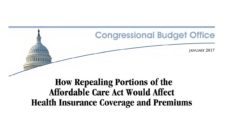The state of Maryland has a history of taking unique approaches to reining in health care spending. In the 1970s Maryland began using an independent commission to set the amount of money the state’s private and public insurers pay each individual hospital for inpatient and outpatient medical services. Under the terms of this system, which goes by the name all-payer rate setting, all insurers pay a hospital the same amount of money for the same inpatient and outpatient procedures. Although a dozen states used all-payer rate setting during the 1980s, today Maryland is the only state that utilizes this system.
To some extent all-payer rate setting appears to have been successful at holding down health care costs in Maryland: when Maryland implemented all-payer rate setting, the price of a hospital admission in the state was 26 percent higher than the national average, but in 2007 the price of a hospital admission was two percent less than the national average. However, from 1990 to 2009, per person hospital spending in Maryland increased .4 percent more than in the rest of the United States during the same timeframe.
The speed at which health care costs grew in Maryland prompted the state to enact a hospital spending cap, which went into effect January 1, 2014. The new model dictates that hospitals will continue to receive fee-for-service reimbursement rates that are set by the state government. However, hospitals must now also ensure that their revenues from inpatient and outpatient medical treatments increase by no more than 3.58 percent – the state’s ten year per capita growth rate – each year. As part of the agreement Maryland reached with the U.S. Department of Health and Human Services , the state pledged to keep the growth in Medicare hospital spending lower than elsewhere in the United States for five years. The agreement also calls for hospitals to transition from receiving reimbursement for each medical procedure they provide to receiving set amounts of money that they use to provide treatment.
Maryland’s Hospital Spending Caps Have Reined in Health Care Expenditures
Several trends suggest that the new model has helped limit hospital spending in Maryland. First, as noted above, in the decades preceding the implementation of the model, hospital spending in Maryland grew at a faster rate than elsewhere in the United States, but under the model hospital spending has been “kept in check,” in the words of Nelson Sabatini, Joseph Antos, Howard Haft, and Donna Kinzer.
Other states may see how effective Maryland’s model has been at reining in hospital spending and try implement similar programs in their own borders.
Second, the first year the model was in place, Medicare hospital spending growth per beneficiary fell by 1.8 percent, and since the model went into effect, hospital spending per Medicare enrollee has risen more slowly than in the rest of the United States. Indeed, although the agreement the state reached with CMS called for Medicare savings of $330 million over the course of five years, Medicare hospital expenditures have already saved $429 million. Third, annual increases in per capita hospital revenues have been small since the model took effect: in 2014, the growth in per capita hospital revenues was 1.47 percent, in 2015 it was 2.31 percent, and the year-to-date growth in 2016 was 0.35 percent per capita.
Obstacles to the Implementation of a Similar Model in Other States
Other states may see how effective Maryland’s model has been at reining in hospital spending and try implement similar programs in their own borders. Charlie Baker, the Governor of Massachusetts, has proposed temporary caps that would prevent the most expensive hospitals and providers from charging more than what Medicare pays, though his plan would not enact all-payer rate setting.
However, there are numerous hurdles other states would need to surmount in order to institute models like Maryland’s. The new model has drastically changed the way Maryland’s hospitals operate, suggesting that hospitals in states that try to enact similar models would need to dedicate a great deal of time and effort to ensure they were well-executed. Furthermore, even though Maryland’s hospital-based waiver built upon the state’s existing all-payer rate setting system, it still took six years to develop, suggesting that other states would need to dedicate years to the establishment of these programs. Additionally, Maryland’s new model might not be popular in more conservative states given the heavy reliance on government-imposed hospital spending caps.
Taken together, all of these obstacles could make it difficult for states to enact programs similar to Maryland’s system of hospital spending caps.
Feature image: Tax Credits, Coins, A pile of coins in a stack, from TaxCredits.net, used under CC BY 2.0/cropped from original.













